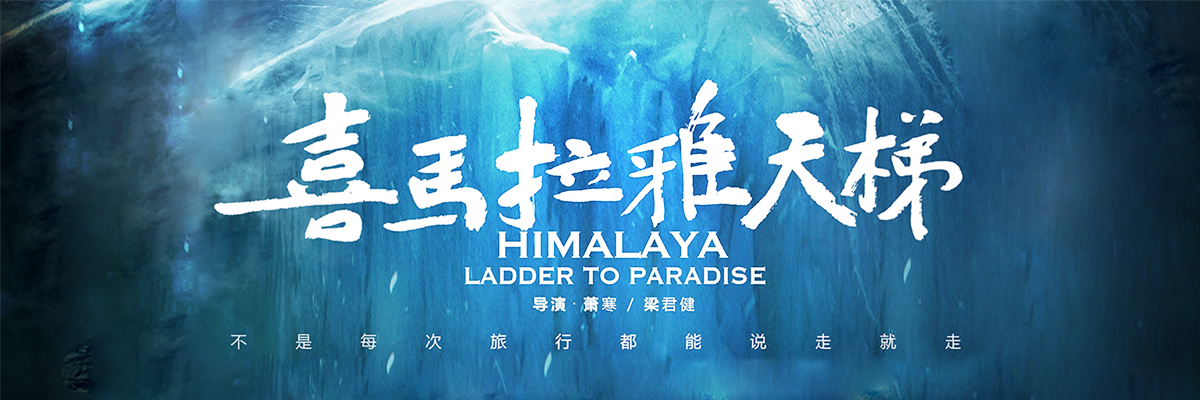
Built in 1899, Rongbuk Monastery, located to the north of Mount Everest and about 20 kilometers from the summit is the highest temple in the world. Agu Sangye is the only monk in the temple. He believes that humans should not disturb the sacred Mt Everest but his son; a graduate from the Tibet Mountaineering Guide School is an exceptional Mt Everest guide.
Tibet Mountaineering Guide School is the only school in the world to continuously recruit students who are interested in mountaineering. Admissions are opened to students from the two counties at the foot of Mt Everest. The goal is to spend 4 years and train these children of farmers and nomadic herders into brave, experienced and fine mountain-climbing guides. Every year for a few days before their climb to the summit, they will pave, ensure rope safety and build camps along the path, which takes them from 5,200 meters above sea level to 8,400 meters. They will handle all luggage and logistics and ensure that climbers are safe. They continuously push themselves to do their best.
On October 16, 2015, this story saw its quiet release in theaters across the country. Unlike other big commercial films, it doesn’t feature an ensemble of well-known actors or dazzling special effects. It doesn’t have such a huge production budget or widespread marketing. This film documents the simple lives of the Tibetans against a backdrop of the stunning scenery, which features one monk, one temple, one mountain and a group of people. Himalaya Ladder to paradise - is a breath of fresh air as it offers a different kind of artistic presentation amongst the strong presence of commercial films that so dominates our country’s film industry.
It is worth mentioning that, this documentary is presented by Tsinghua people, one that is produced by Qingying Studio (a studio from School of Journalism and Communication at Tsinghua University). A large number of teachers, students and alumni were directly involved in the creation of the film. The film producer Dr. Lei Jianjun serves as an associate professor who teaches documentary making and he has established Qingying studio in 2006. So far, it has gained many national and international awards and recognitions. One of the film’s directors, Dr. Liang Junjian is a lecturer of news photography and filmmaking. The assistant director is a 2007 class undergraduate Guo Weisong. The chief supervisor of the film is Professor Yin Hong who also serves as the Executive Vice Dean of School of Journalism and Communication. The associate producers includes Gao Ran, a 1999 graduate, Xu Guangyu and 2002 graduate Liu Shuo.
The idea for Himalaya Ladder to paradise came from Dr. Lei Jianjun’s 2010 trip to Tibet. School of Journalism and Communications, alumni and the international body supported it for the next 4 years until its completion. From the beginning, the intention was to release this onto the big screen at theatres in hope of achieving a breakthrough for the production and distribution of documentary films in the Chinese Film Industry. In order to achieve the goal of fine audiovisual quality and a true reflection of life in the area, the crew started to make continuous tracking shots from September 2013. The crew lived with the shooting subjects, followed their everyday life, celebrated Tibetan New Year with their families and spent more than two months at their Mt Everest Camp Base.
As the first film filmed in 4K Ultra HD, which recorded the whole climb, it was also a ‘first’ in many other aspects. It was the first time that a tripod stood at the summit of Mt Everest, the first to have filming done at 7,000 meters above sea level and the first to have a drone capture images and film at 6,500 meters above sea level. In order to complete photography at such a high altitude, the crew spent three month training their Tibetan Guides into photographers. As soon as they finished shooting at the Northern Summit, an avalanche tragically hit climbers in Nepal.
What is great is the fact that amongst rising investments in commercial films, this film has been gaining a lot of support from fans. The initial estimated cost of production is 1 million. After field investigation and preliminary research, it became 5 million RMB. In the end, 13 million RMB was spent on the film. Behind this figure were the support from 700 individuals and their contributions.
Unlike its commercial counterparts, documentaries rely on the visuals to tell the story. It is realistic and shortens the distance between the camera and the subject. It captures every aspect of life, every detail, giving you access to something magnificent and true, something marvelous right at your fingertips. Very early on, the film has been put on the list for nomination and recognition by International bodies. It is the first film to make it into the French Documentary Festival. Many well-known television stations such as BBC and NHK have expressed their interest in the purchase of the film. After landing in theaters, Himalaya Ladder to paradise won praises from fans and saw its release time being extended.
Himalaya Ladder to paradise - the name derives from the little white ladders drawn on the rocks and cliffs at the Qinghai Tibet plateau by the local Tibetans. Known locally as the ladder, it is a belief that the ladder can guide and lead the soul to the holy land. The film chronicles the protagonist – the young Mt Everest guides who like the ladder forms the backbone of the holy climb. For them, it is not only a travel journey but also the rite of passage. Documentaries are different in creativity and presentation and this work paves the way for more documentary makers to find their own ladder to climb high and reach their individual artistic goals. For the Tsinghua team, it is also a starting point and a rite of passage. It is not perfect but it is unique.
(From Tsinghua Sprtlights :http://www.tsinghua.edu.cn/publish/newthuen/8914/2015/20151105085914580515696/20151105085914580515696_.html)

